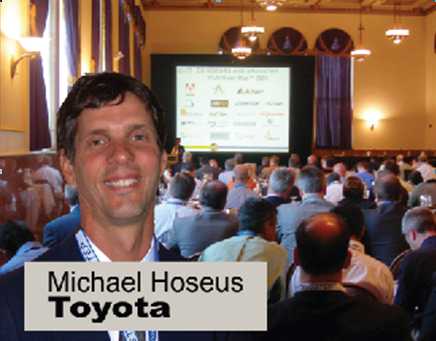
Product Lifecycle Management Road Map 2008 conference
Staff
General DPN DETROIT - The Fall 2008 and 15th PLM Road Map conference presented by Collaborative Product Development Associates (www.cpd-associates.com) addressed the issues arising in reconciling more and more detail across more and more expert domains from design, through simulation, on into manufacturing, and extending across the supply chain. Successfully addressing the full needs of product lifecycle management (PLM) across the full product lifecycle clearly involves the transformation of the business - presenting deep cultural challenges involving process management and standardization.
DETROIT - The Fall 2008 and 15th PLM Road Map conference presented by Collaborative Product Development Associates (www.cpd-associates.com) addressed the issues arising in reconciling more and more detail across more and more expert domains from design, through simulation, on into manufacturing, and extending across the supply chain. Successfully addressing the full needs of product lifecycle management (PLM) across the full product lifecycle clearly involves the transformation of the business - presenting deep cultural challenges involving process management and standardization.
In the conference track covering detailed technology issues, integration across the electrical, software, and mechanical domains represented a major theme. Woo Jin Ho and Jay Vleeschhouwer of Merrill Lynch concisely summarized two tracks with the conclusion that PLM/PDM adoption is “coming of age,” and that the “transition to enterprise simulation management is still early, but becoming more promising,” according to “The Software Standard” report published by Merrill Lynch last month.
Christian Verstraete, CTO for Manufacturing and Distribution Industries at Hewlett Packard, kicked off the conference. He focused on the processes, the people, and the technology required to optimize the use of an extended supply chain, with particular concern for collaborative relationships with key partners in developing and optimizing collaborative processes. While automotive, aerospace, and manufacturing firms have faced sharply accelerating rates of change and challenge, the semiconductor and IT companies have lived with accelerated rates of change for over half a century.
With 13 years of corporate leadership at Toyota’s Georgetown, Kentucky plant, Michael Hoseus reviewed how the Toyota culture builds on the respect for people and their development to fully support efforts with continuous improvement. A process orientation depends upon managers who understand that the right process will get the right results. A successful program must establish mutual trust with employees to sustain the continuous improvement that reinforces itself by providing satisfaction to the employees, and prosperity to the organization. Process standardization presents an absolute requirement.
In the PLM Integration/Product Definition track, Ben Martin from General Dynamics, Martin Nehls from Facton, Inc. and Joe Feord from Munro & Associates reviewed the approaches and payoffs of connecting product development and manufacturing to financial metrics. A common deficiency with most PLM systems today relates to a major time lag in the feedback on costs and profitability to engineering. All too often, by the time the financial side of the business runs its numbers, the engineering team has moved on and the opportunity to redesign for greater profitability has been lost. Early and efficient verification of costs and profitability helps to avoid this scenario.
A panel discussion on standards for PDM interoperability hosted Ric Wagner from Ford, Paul Downing of Prostep and Rahul Garg of Siemens PLM Software. The success and payoff of an integration platform based on standards allows organizations to select best-in-class products tailored for their organizations in a heterogeneous environment. A structured and standardized approach helps companies to realize their enterprise integration needs and directly contributes to the successful implementation of integration, synchronization and migration strategies. The supplier should be able to automatically synchronize not only geometry but also metadata, product structure, positioning and configuration data. Of particular note, Ford and its suppliers today are able to share “complete” product information via JT irrespective of the originating native CAD data format, while supporting full design in context processes.
In his closing keynote on Future Trends in PLM, Terry Kline from General Motors highlighted that the Global Product Development at GM now operates as one global organization, rather than regional development centres. Information Systems and Services have played a critical role in the ongoing transformation, and in driving the full optimization of virtual product development on a global basis. It must deliver a global architecture for PDM and collaboration, fully addressing the range of challenges involved with the people, the processes, and the technology to drive faster speed to market.
